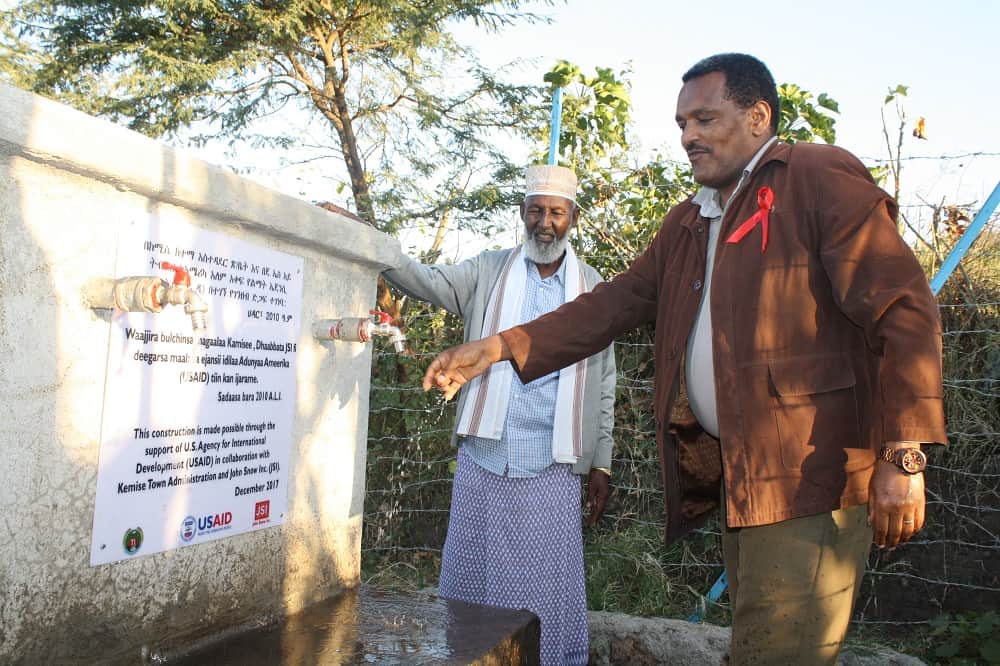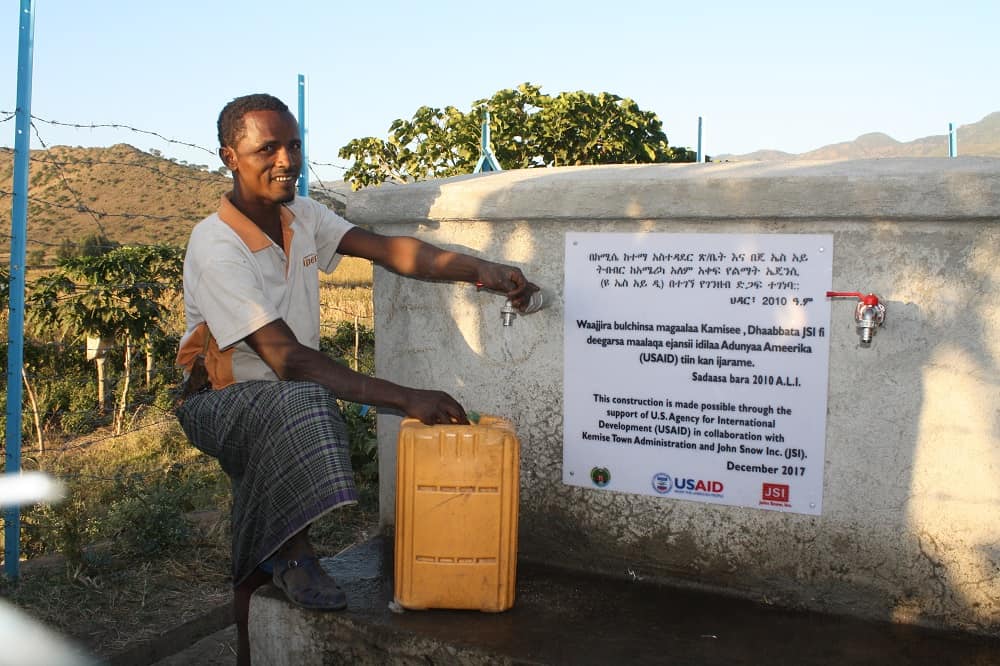Leveraging Business Approaches to Improve Access to WASH Services in Ethiopia
March 27th, 2018 | viewpoint
Urban health in a developing country context is complex and only gets more so as people continue to migrate from rural areas, stretching already scarce resources even further. When drought struck Ethiopia in 2016, agrarian and pastoralist communities were particularly hard hit. Many people migrated to nearby urban areas, which put a strain on the existing social services, including feeding centers; treatment facilities; and water, sanitation, and hygiene (WASH) services. The lack of WASH facilities, in particular, threatened to cause serious public health problems.
The few existing public latrines were either not functional or in very poor condition. Health facilities and churches had limited WASH facilities. In areas where public latrines were not available, open defecation was the only option. To address these problems, USAID provided funding to the Strengthening Ethiopia’s Urban Health Program (SEUHP) to implement an emergency WASH intervention in selected urban and peri-urban areas.
SEUHP conducted a rapid assessment to identify the towns with the highest need for public WASH facilities. In these towns, SEUHP constructed standard public toilets with bathing rooms, updated health centers’ water supply systems, built public water points and pipeline extensions, and rehabilitated hand-dug wells and public latrines.

Through this intervention, SEUHP learned a number of important lessons in designing and maintaining public WASH facilities.
1) New business models for public latrine management are needed to ensure sustainable services
Public latrine management is a challenge around the world; Ethiopia is not exceptional in this regard. Public WASH facilities often go out of service after a few years or even few months if they are not managed well. In Ethiopia, many public latrines are owned and managed by municipalities or designated government structures and users aren’t charged for service. This limits income generation and facility upkeep. As a result, existing facilities often provide low-quality services or none at all. According to SEUHP’s resource mapping of public and communal latrines in 2015, 22 percent of the toilets in the regions where the program operates were non-functional at the time of assessment.
Currently, the government of Ethiopia is making a significant effort to transfer the management of public latrines to private entities, particularly small and medium enterprises (SMEs), which use a pay-per-use business model to cover the cost of maintenance and make a profit. These facilities are better maintained than those managed by the government. However, SMEs that have managed public toilets report that the amount of revenue collected is still not enough to cover the operation and maintenance costs.
To address these challenges, SEUHP hired a professor from Addis Ababa University to design a business model for public latrine management. The proposed model pairs public latrine services with another business opportunity (such as a coffee house) to create a sustainable public latrine management approach. The professor will train the people who will manage the facilities that SEUHP constructed. Additionally, SEUHP will provide onsite management support for a year with the goal of sharing the model with the government so that it can sustain these facilities and replicate the approach at others.
2) User demand must be a key consideration when constructing or renovating public WASH facility sites
The location of public WASH facilities often determines use. SEUHP selected sites near markets, health centers, churches, and other high-traffic areas with poor or non-functioning facilities.

The program identified additional factors that contribute to an increase in the number of public toilet users, including the availability of a water reservoir; separate toilet rooms for women, children, and disabled people; functional doors; and handwashing facilities. SEUHP designed and constructed the public WASH facilities with these factors in mind.
SEUHP also worked with urban health extension professionals and Health Development Army members to promote the public WASH facilities among vulnerable populations including people displaced by drought, the urban poor, and women- and child-headed households.
3) Accessibility and affordability should also be key considerations when designing and building public latrines
About 37 percent of urban residents in Ethiopia rely on shared public latrines and so facilities need to be accessible and affordable. After a year-long consultative process with the government and other stakeholders, SEUHP developed a public latrine design that can be adapted to different budget sizes, land availability, and users’ needs. The emergency WASH facilities SEUHP constructed and renovated target users from drought-affected communities and are expected to provide services at no or minimum cost.
4) Collaboration with local government and stakeholders is essential
Access to land for constructing latrines in urban areas poses a significant challenge. As a result, it is necessary to work with the local government to identify and secure land for WASH facilities. SEUHP engaged local administrations in selecting sites, determining the materials needed, and identifying SMEs to manage the public WASH facilities. This also proved to be a crucial step in establishing a sustainable management system for the facilities as local governments will support future renovations and capacity-building demands.
Written by Kibrewosen Worku
We strive to build lasting relationships to produce better health outcomes for all.